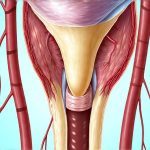Muscle breakdown, also known as muscle catabolism, is an inherent part of many physiological processes. It isn’t always negative; in fact, it’s essential for adaptation to exercise, wound healing, and even simply maintaining a healthy metabolic rate. The process involves breaking down muscle proteins into their constituent amino acids, which can then be repurposed by the body for various functions. However, excessive or prolonged muscle breakdown can signal underlying health problems or inadequate nutrition, leading to weakness, fatigue, and compromised immune function. Understanding whether evidence of this breakdown appears in urine—and what that might look like—is crucial for anyone interested in their overall health and fitness.
The question isn’t necessarily about detecting intact muscle fibers in urine – that would be a very serious sign indicating significant trauma or kidney dysfunction. Instead, we’re focusing on identifying metabolic byproducts of muscle breakdown, specifically compounds released as the body processes damaged muscle tissue. These biomarkers can offer clues about the rate and extent of catabolism, though interpreting them requires nuance because many factors influence their presence in urine. Detecting these markers is not typically part of routine medical check-ups but may be investigated under specific circumstances or for athletes monitoring recovery.
What Happens During Muscle Breakdown?
Muscle breakdown isn’t a single event; it’s a complex cascade triggered by various stressors. These can include intense exercise, prolonged fasting, illness, injury, and even psychological stress. When these stressors occur, the body releases hormones like cortisol (a stress hormone) and initiates proteolytic pathways – processes that break down proteins. This breakdown yields amino acids, some of which are used to build other necessary proteins or converted into glucose for energy. However, the process also generates waste products, notably urea and creatine kinase (CK), which can be excreted by the kidneys and found in urine. It’s important to remember that a small amount of these substances is normal; elevated levels are what typically raise concern.
The type of muscle breakdown matters too. Exercise-induced muscle damage (EIMD) differs from breakdown caused by illness or malnutrition. EIMD, common after strenuous activity, leads to micro-tears in muscle fibers, triggering an inflammatory response and subsequent repair process. Breakdown due to other factors is often more systemic and can indicate a broader health issue. The body attempts to mitigate the effects of excessive catabolism through processes like gluconeogenesis (creating glucose from non-carbohydrate sources) and protein synthesis (building new proteins), but if breakdown consistently outpaces these repair mechanisms, problems arise.
Furthermore, hydration status plays a significant role in urine concentration. A dehydrated individual will naturally have more concentrated urine, potentially leading to higher readings of muscle breakdown markers even without excessive catabolism. Therefore, interpreting urinary biomarker levels requires considering the context and, ideally, comparing them against baseline values or conducting multiple tests over time. **Can dehydration cause protein in urine?** is a common question when assessing these results. Accurate interpretation necessitates professional medical evaluation.
Urinary Biomarkers & Their Limitations
Several biomarkers can indicate muscle breakdown in urine, but their utility is often limited by factors like sensitivity, specificity, and individual variability. Creatine kinase (CK) is perhaps the most well-known marker, commonly used to diagnose muscle injury and certain heart conditions. However, CK levels are also affected by strenuous exercise and can be elevated due to skeletal muscle damage unrelated to significant catabolism. Myoglobin, a protein found in muscle tissue, can also appear in urine after intense exertion or muscle trauma, but its presence often indicates more severe muscle damage than simple breakdown.
Urea nitrogen is another byproduct of protein metabolism, including muscle breakdown. Elevated urea levels (uremia) can signal kidney dysfunction as much as—or more than—muscle catabolism. Therefore, relying solely on urea levels to assess muscle breakdown isn’t reliable. More specialized markers are sometimes used in research settings but aren’t routinely available in standard clinical tests. These include branched-chain amino acids (BCAAs) and their metabolites, which can provide a more nuanced picture of protein turnover. However, even these markers have limitations and require careful interpretation by healthcare professionals.
It’s vital to understand that detecting these biomarkers doesn’t automatically equate to a health problem. Many healthy individuals will exhibit elevated levels after intense exercise or during periods of stress. The real concern lies in persistently high levels or sudden, unexplained increases, which warrant further investigation. If kidney function is also a concern, **does ultrasound help detect kidney shrinkage in CKD?** might be relevant.
Assessing Muscle Breakdown: When to Seek Help
If you suspect excessive muscle breakdown due to persistent fatigue, weakness, unexplained muscle pain, or dark urine (which could indicate myoglobinuria), it’s essential to consult a healthcare professional. They can order appropriate tests and evaluate your overall health status to determine the underlying cause. Don’t attempt to self-diagnose based on internet research or assumptions. A doctor will likely start with a thorough physical examination and ask about your medical history, diet, exercise habits, and any recent stressors you’ve experienced.
Following the initial assessment, they might order blood tests to measure CK levels, kidney function (urea and creatinine), and potentially other markers of muscle damage. A urine analysis may also be performed to check for myoglobin or abnormal protein levels. It’s important to note that a single test result is rarely sufficient for diagnosis; multiple tests over time are often needed to establish a clear pattern. The doctor will consider all available information and rule out other possible causes before making a definitive diagnosis.
Factors Influencing Urinary Marker Levels
Numerous factors can influence the levels of muscle breakdown markers in urine, complicating accurate interpretation. Hydration status is paramount; dehydration concentrates urine, artificially inflating biomarker concentrations. Exercise intensity and duration also play a significant role; strenuous activity naturally elevates CK and myoglobin levels for a period after exertion.
Dietary intake affects protein metabolism and urea production. A high-protein diet can lead to higher urea levels, even without excessive muscle breakdown. Underlying medical conditions, such as kidney disease or liver dysfunction, can also impact biomarker levels. Medications, particularly statins (cholesterol-lowering drugs), can sometimes cause muscle damage and elevate CK levels. Finally, individual variability plays a role; people respond differently to stressors and have varying baseline levels of these markers.
Preventing Excessive Muscle Breakdown
While some muscle breakdown is unavoidable, you can take steps to minimize it and support healthy muscle recovery. Adequate protein intake is crucial for repairing damaged muscle tissue and preventing catabolism. Aim for approximately 0.8-1 gram of protein per pound of body weight, especially after exercise. Proper hydration is also essential; drink enough water throughout the day to maintain adequate kidney function and prevent concentrated urine.
Prioritize a balanced diet rich in vitamins and minerals, particularly those involved in muscle recovery (e.g., vitamin D, magnesium). Manage stress levels through techniques like meditation, yoga, or deep breathing exercises. Allow for sufficient rest and recovery between workouts to give your muscles time to repair themselves. **Avoid overtraining** which can lead to chronic fatigue. If you’re concerned about other potential issues detected in a urinalysis, understanding **what does protein in urine mean on a urinalysis?** could be helpful. Finally, if you have any underlying medical conditions that might contribute to muscle breakdown (e.g., diabetes), work with your doctor to manage them effectively. Remember, a proactive approach to health and fitness is the best way to prevent excessive muscle catabolism and maintain overall well-being.





















